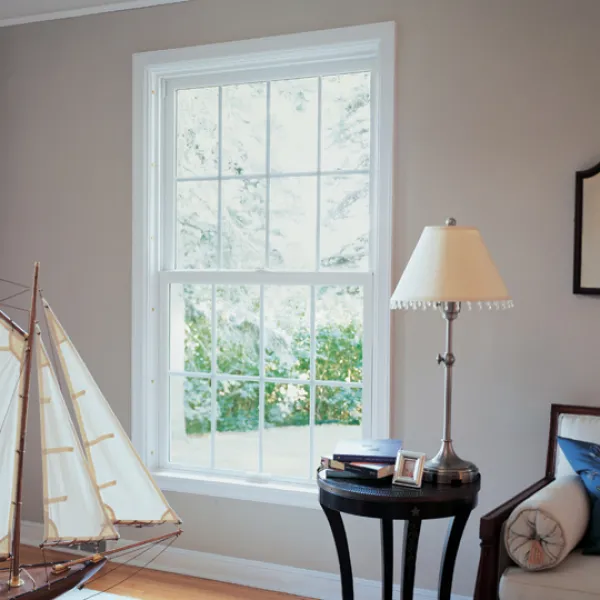Installing replacement windows in your home is a significant long-term investment. Looks, durability and maintenance requirements are a few factors that homeowners consider when choosing their windows, and energy efficiency is another important feature. Though energy efficient windows might be somewhat pricier than the alternatives, they’re better at insulating homes against temperature extremes and they reduce energy bills. The window frames, panes and spacers all contribute to the energy-saving effect.
Insulating frames
Energy Star explains that window frame materials make a big difference when it comes to energy efficiency. Most window frames are made of fiberglass, vinyl, aluminum or wood. Aluminum frames are the least insulating of the four types, though manufacturers add thermal breaks to reduce heat loss. While some homeowners prefer the traditional look of wood, it requires more maintenance than fiberglass frames. Infinity from Marvin fiberglass windows offer the best of all worlds by combining the appearance of wood with the insulating properties of fiberglass. Additionally, Infinity from Marvin frames don’t expand or contract during weather changes, which prevents tiny gaps that can appear. This saves money on energy bills because hot and cold air can’t seep through.
Energy-efficient window panes
When selecting the perfect window for your home, it’s important to consider what type of window is the most energy efficient. Multi-pane glass traps air between the glass and helps insulate the home during hot and cold weather. Energy-efficient replacement windows usually feature double-pane glass and the area between the panes is filled with inert gases like Argon or Krypton. These gases are odorless, colorless, non-toxic and are better insulators than plain air. More information can be found at EnergyStar.gov.
Infinity from Marvin fiberglass windows and other top-of-the-line energy efficient windows also feature specialized glass coatings that offer additional energy-saving benefits. Called Low-E glass coatings, they reflect infrared light, keeping homes cool in summer and warm in winter.
Spacers
Spacers are the window components that separate the panes on a multi-pane window. Heat can bleed across spacers, so in high-quality energy-saving windows, spacers insulate the edges of the panes and reduce the heat transfer.
Investing in energy-efficient windows
Energy-efficient replacement windows can save around 20% on your energy bills, according to Energy Star, but the range of specifications can be confusing. When making your selection, check the U-factor, air infiltration, solar heat gain coefficient and visible transmittance. The U-factor is the energy efficiency rating, and a factor between 0.15 and 0.26 provides good energy savings. Air infiltration should be 0.5 or lower, Solar Heat Gain Coefficient should be 0.29, or lower if you live in a warm climate and Visible Transmittance should be higher than .40 in triple-pane windows and higher than .50 in double-pane windows.
Infinity from Marvin fiberglass windows offer a range of performance levels based on the climate at the home’s location, but their Low E/ERS windows offer the maximum energy efficiency for Georgia climates.
Energy-efficient replacement windows improve your home’s appearance, and they increase your family’s comfort by reducing the effects of weather extremes on the indoor environment. Lower energy bills are another benefit, which significantly offsets the initial investment in good quality window products. Replacing your windows with energy-efficient models is a substantial upgrade for your home and living experience.




